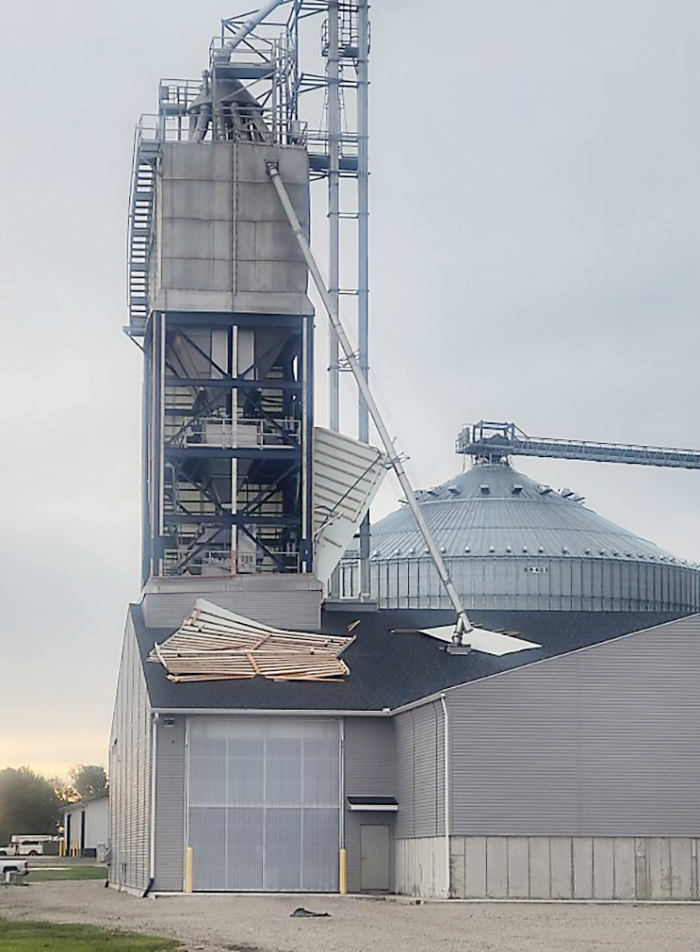Sulfur Safety: Fertilizer Plant Fire Sheds Light on the Importance of Safe Handling Protocols

Gold Eagle Cooperative in Hardy, Iowa suffered a scare on Tuesday afternoon when the bin under its fertilizer building exploded.
According to Jeff Mericle, Gold Eagle safety director, eight yards of sulfur ran through the pit before it was elevated to the mixing bin, where the sulfur ignited.

Local EMS swiftly responded to the scene, but Mericle says the fire burned itself out before the fire trucks rolled up. No injuries have been reported.
A private fire investigator surveyed the scene on Thursday, but his verdict will not be announced until his investigation concludes next week, according to Mericle.
What You Should Know About Sulfur
A fertilizer plant suffering a sulfur fire isn’t unheard of, though it is uncommon.
Since the Clean Air Act was enacted in 1970, the amount of sulfur captured from the atmosphere into soil has decreased. Adding sulfur to fertilizer mixes has since become a more common practice, leading to higher sulfur production at fertilizer plants, according to Craig Jorgenson, vice president of transportation and regulatory affairs at The Sulfur Institute (TSI).
When fertilizer plants blend sulfur into a fertilizer mix, the sulfur becomes airborne. The suspended sulfur particles develop surface charges that make them repel one another, creating a recipe for disaster.
Wipe the Dust Off Your Safety Handbook
Jorgenson says these dust explosions are a reminder to ensure safety protocols are up to industry standards.
“Sulfur is a key crop nutrient and retailers that do the blending operations need to have those safe handling practices just as they would for any other product,” says Jorgenson.
As a National Fire Protection Association committee member, Jorgenson recommends the association’s Standard Prevention of Sulfur Fires and Explosions (Standard 655) as a trusted resource.
“The science points out that sulfur has a lower ignition point than some other materials. It’s a softer material on the hardness scale of minerals,” he says. “Harnessing housekeeping procedures for sulfur, grain flour, confectionery sugar, etc. are important to keep up with, and that’s what the Standard 655 offers.”
OSHA offers its own set of recommendations for combustible dust explosions, including:
• Use of proper dust collection systems and filters
• Cleaning methods that do not generate dust clouds
• Use of only vacuum cleaners approved for dust collection
• Control of static electricity, including bonding of equipment to the ground
• Implementation of a hazardous dust inspection, testing, housekeeping and control program
More on ag safety:
In the 'Silo': Hulu Film Sheds Light on the Dangers of Grain Bin Entrapment
Here’s Why You Need to Find Time for A Nap During the Busy Season







